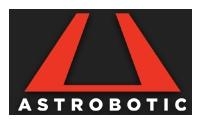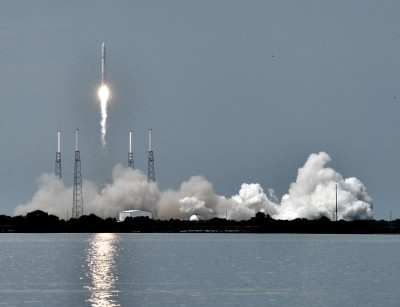Thu, Apr 26, 2012
Will Determine If Company Can Deploy Ice Prospecting Equipment To The Moon
NASA has awarded a contract to Astrobotic Technology to determine whether its polar rover can deploy an ice-prospecting payload to the Moon. The ice could yield water, oxygen, methane and rocket propellant to dramatically reduce the cost of space exploration. "Astrobotic seeks the immense resources available on the Moon to both accelerate space exploration and improve life on Earth," said David Gump, president. "The lunar path is near term. We intend a prospecting mission in 2015."

Astrobotic began development of its lunar excavation robot in 2009 under a series of NASA Small Business Innovation Research (SBIR) contracts that now total $795,000. The new NASA SBIR Phase 3 follow-on contract is to consider robot refinements for carrying NASA-supplied instruments and a drill. Recent lunar-orbiting satellites from several nations, and a NASA probe that impacted near the Moon's south pole, have sensed polar ice composed of water, methane, ammonia, carbon monoxide, hydrogen sulfide and other substances. These polar resources went undiscovered during the Apollo expeditions which landed near the equator. The next step is to drill and measure the polar ices directly to see if they are sufficiently concentrated to be useful.
Lunar propellant derived from the ice could fuel spacecraft for long voyages, Earth-return, or maneuvering satellites. Water and oxygen would be invaluable for life support. Other elements have immense value for energy, processes, fabrication and habitation. When seeking resources from planetary destinations, the four-day travel time to reach the Moon enables early return on investment compared to more distant targets.

Astrobotic has reserved a Falcon 9 launch vehicle made by SpaceX to send its spacecraft and robot explorer on a trajectory toward the Moon. The Astrobotic spacecraft will deliver the prospector to the lunar surface with technology that autonomously avoids landing hazards such as large rocks and craters. The navigation system is derived from technology developed at Carnegie Mellon University under Dr. William "Red" Whittaker, Astrobotic's founder. Dr. Whittaker won the DARPA Urban Challenge with a driverless car able to autonomously navigate through city streets, avoiding other cars and obeying the California traffic code. The ability to detect hazards and automatically select alternative pathways is the core of Astrobotic's automatic lunar landing system.
Astrobotic has won $12 million in nine NASA lunar contracts, covering topics from simulating lunar gravity on Earth to discovering ways to robotically explore the Moon's volcanic caves. Lunar satellites recently spotted potential entrances to these caves, which can provide shelter to robot and human explorers from the radiation, micrometeorites and extreme temperature swings of the lunar surface.
More News
Aero Linx: International Federation of Airworthiness (IFA) We aim to be the most internationally respected independent authority on the subject of Airworthiness. IFA uniquely combi>[...]
Ultrahigh Frequency (UHF) The frequency band between 300 and 3,000 MHz. The bank of radio frequencies used for military air/ground voice communications. In some instances this may >[...]
A Few Questions AND Answers To Help You Get MORE Out of ANN! 1) I forgot my password. How do I find it? 1) Easy... click here and give us your e-mail address--we'll send it to you >[...]
From 2019 (YouTube Edition): Learning To Paint Without Getting Any On Your Hands PPG's Aerospace Coatings Academy is a tool designed to teach everything one needs to know about all>[...]
Also: Sustainable Aircraft Test Put Aside, More Falcon 9 Ops, Wyoming ANG Rescue, Oreo Cookie Into Orbit Joby Aviation has reason to celebrate, recently completing its first full t>[...]
 ANN's Daily Aero-Linx (05.06.25)
ANN's Daily Aero-Linx (05.06.25) ANN's Daily Aero-Term (05.06.25): Ultrahigh Frequency (UHF)
ANN's Daily Aero-Term (05.06.25): Ultrahigh Frequency (UHF) ANN FAQ: Q&A 101
ANN FAQ: Q&A 101 Classic Aero-TV: Virtual Reality Painting--PPG Leverages Technology for Training
Classic Aero-TV: Virtual Reality Painting--PPG Leverages Technology for Training Airborne 05.02.25: Joby Crewed Milestone, Diamond Club, Canadian Pilot Insurance
Airborne 05.02.25: Joby Crewed Milestone, Diamond Club, Canadian Pilot Insurance




